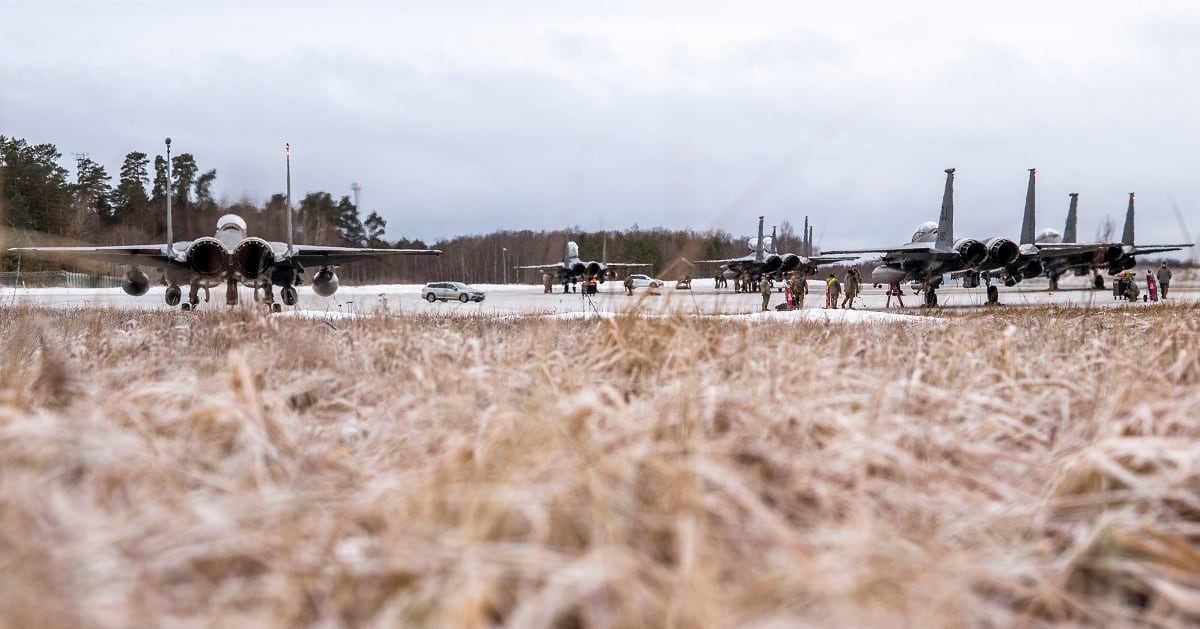U.S. Air Force F-15E Strike Eagles assigned to the 4th Fighter Wing out of Seymour Johnson Air Force Base, North Carolina, landed at Amari Air Base in Estonia Wednesday to supplement forces already deployed in support of NATO’s enhanced air policing mission in the Baltics.
The American pilots will be flying alongside a detachment of Belgian F-16s and Estonian aircraft currently supporting the air policing mission, while also practicing air-to-air and air-to-ground maneuvers. In addition to the U.S. aircraft, Danish F-16s will deploy Thursday to Siauliai Air Base in Lithuania.
“Baltic and enhanced air policing are enduring NATO missions that deliver constant vigilance of Allied airspace and contribute to the Alliance’s collective defense posture,” NATO’s Allied Air Command Chief of Staff Maj. Gen. Jöerg Lebert said in a press release.
“The additional aircraft will work closely with the current detachments to increase our readiness, build crucial interoperability and underline the robust solidarity across the Alliance,” Lebert said.

This latest iteration of U.S. fighter jets follows the early January deployment of U.S. F-16s from Spangdahlem Air Base in Germany to Poland in support of Polish and Belgian aircraft flying air policing missions in the region.
NATO air policing missions, which deploy aircraft with both offensive and defensive capabilities to ensure no suspicious or unauthorized flights enter NATO airspace, have taken on new significance as the conflict between Russia and Ukraine continues to develop.
On Monday, the Pentagon announced that it was putting 8,500 troops on heightened alert in case Russia does, in fact, invade Ukraine.
While President Joe Biden has previously stated that no U.S. troops would be permanently stationed there, the 8,500 would be deployed in support of NATO’s Response Force, a multinational, 40,000-troop collective tasked with responding to aggressions against NATO countries and allies.
Rachel is a Marine Corps veteran and a master's candidate at New York University's Business & Economic Reporting program.




